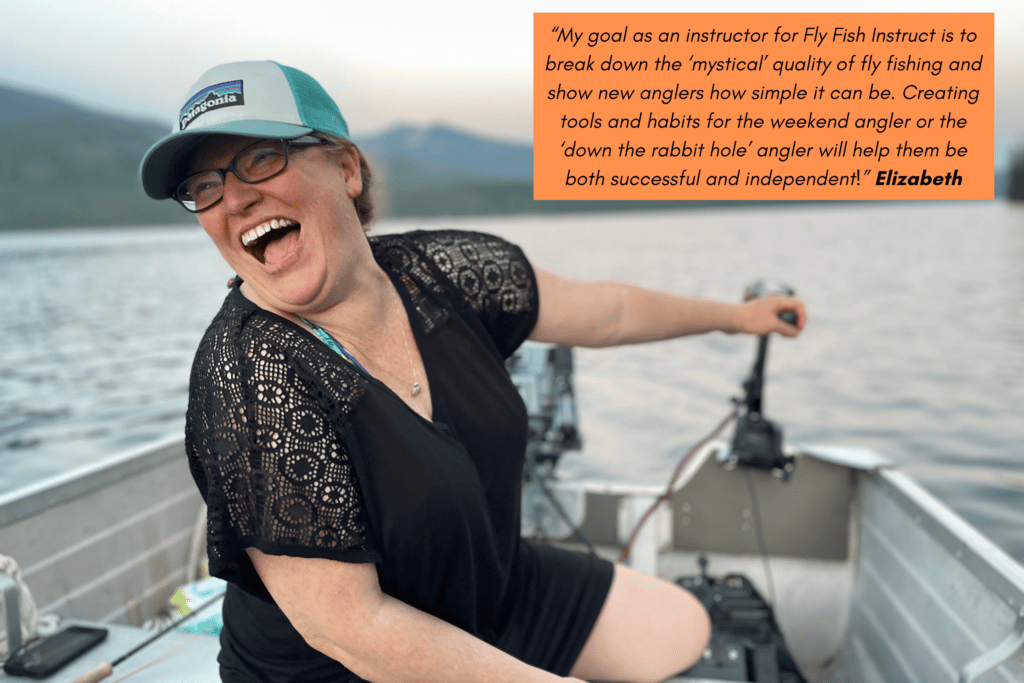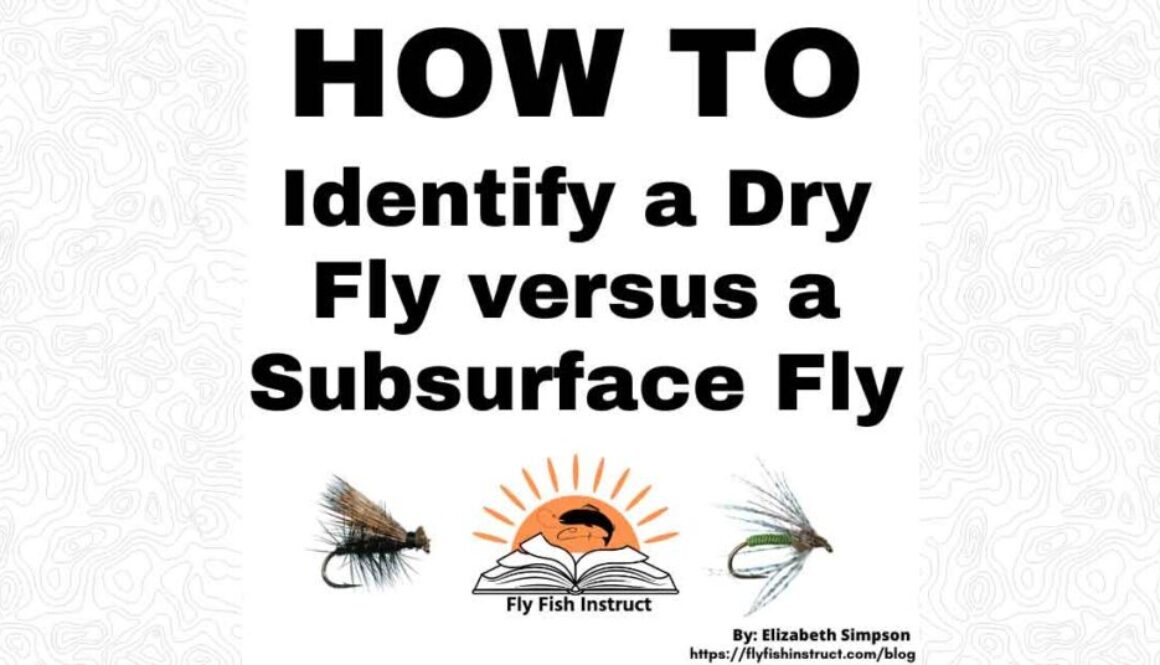How to Identify a Dry Versus a Subsurface Fly
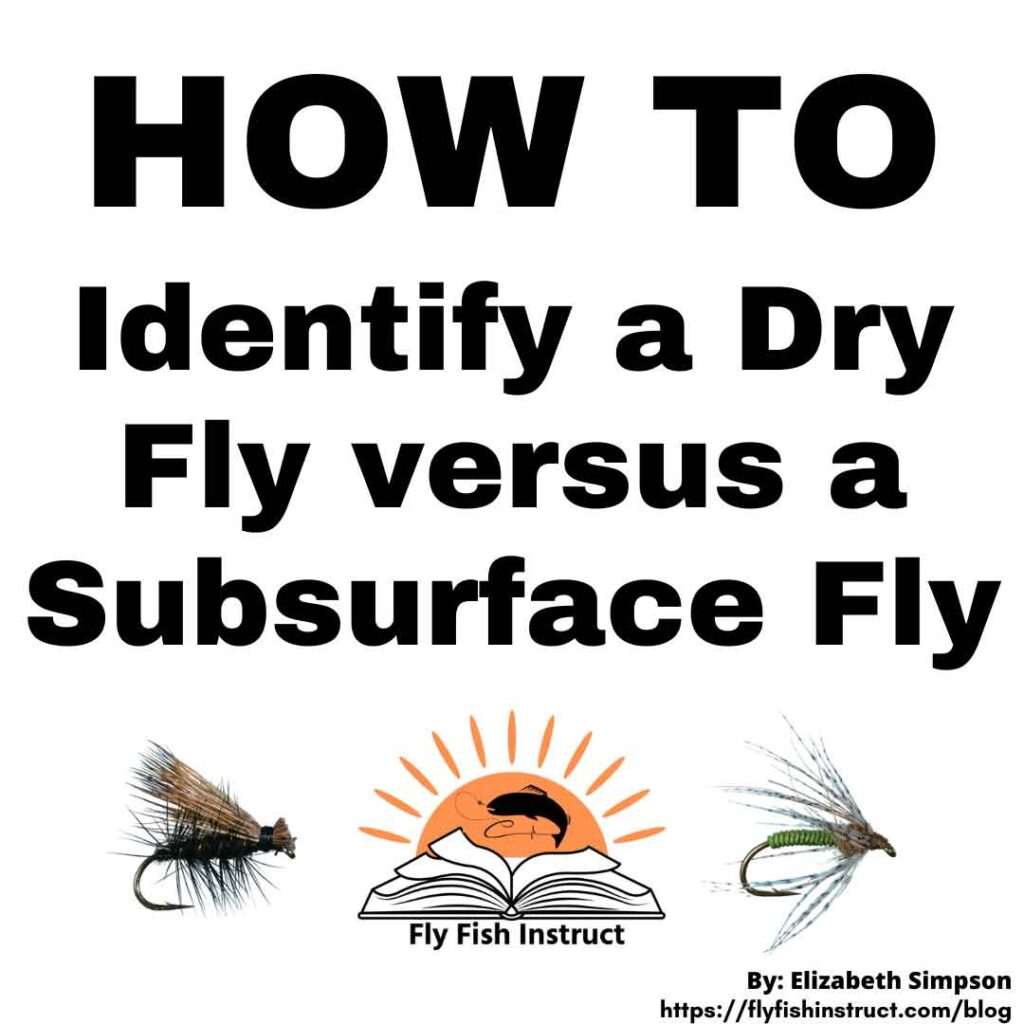
One of the most common questions we receive is how you know what flies are in your fly box and how to choose the correct fly for the fishing situation. We feel it’s essential to start with how to identify a dry versus a subsurface (wet) fly.
Dry Flies
A dry fly floats. Dry flies imitate the adult stage of an insect. These flies tend to have materials designed to float on the water’s surface. These materials include hair, foam, and stiff feathers called hackle.
Hair
Flies are often tied with elk, deer, or moose hair. This hair has hollow fibers allowing the fly to float. Wings like that on an Elk Hair Caddis will allow the fly to stay above the water’s surface. Other haired patterns include a Comparadun, Royal Wulff, or Stimulator.
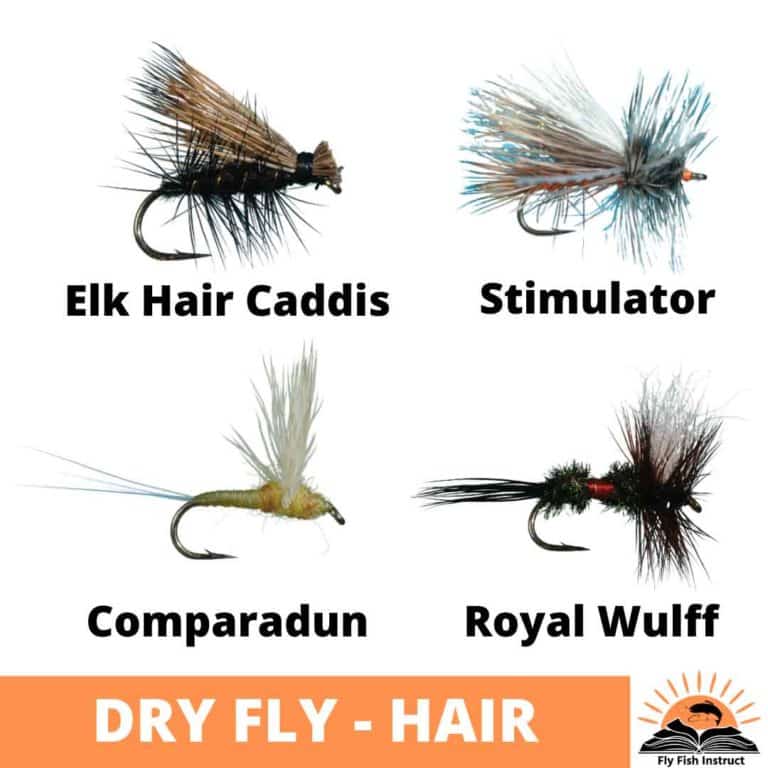
Foam
Foam flies are made to float! The foam is made with small pockets of air, allowing the fly to float almost forever. Common foam flies are Chubby Chernobyl, Grasshopper, Ants, and Beetles.
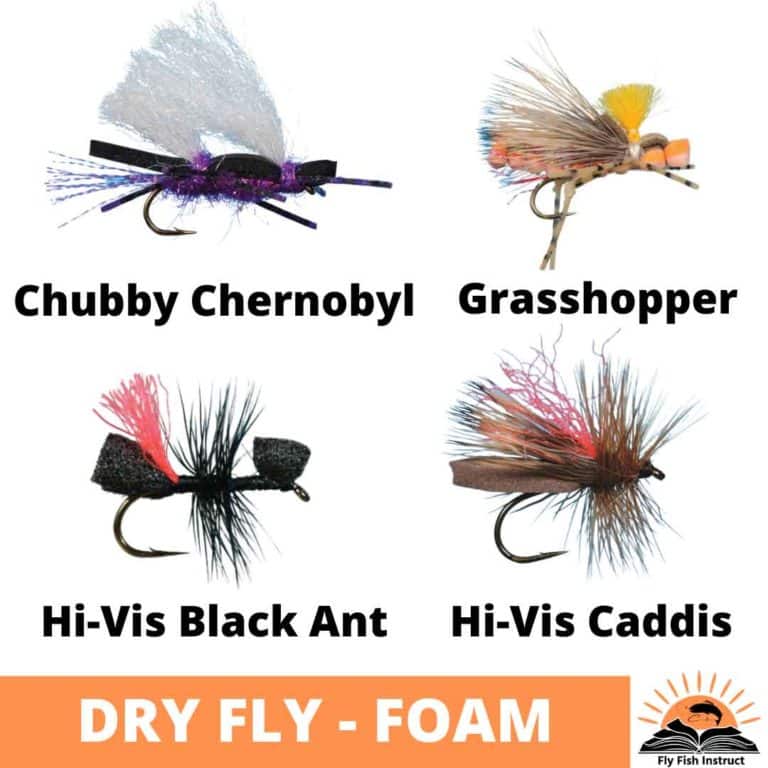
Hackle
The feathers most commonly used on a dry fly come from roosters bred for long, stiff barbed feathers. These feathers have stiff barbules (think uncooked spaghetti), the individual strands that allow the fly to stand off the water. This feather can be wrapped vertically along the hook shank, vertically at the bug’s thorax, or horizontally around a post or parachute. Common flies include Parachute Adams, Griffith Gnat, Renegade, and Brooks Sprout.
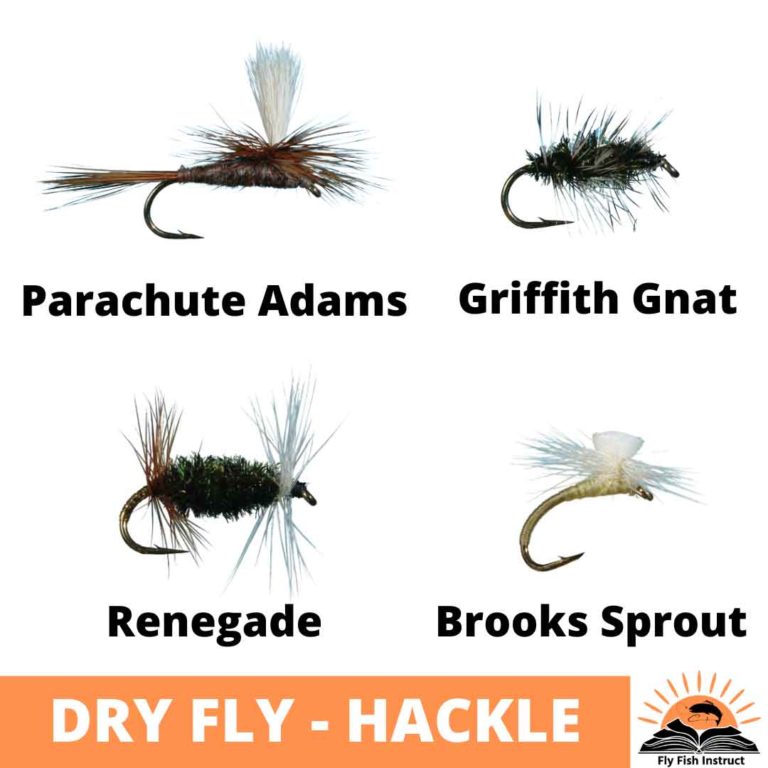
Subsurface (wet/Nymph) Flies -
Subsurface flies are also wet flies, nymphs, larvae, or pupa. These flies are made to imitate the immature phase of an insect or baitfish. These flies are below the subsurface in the water column and typically have something to help them sink. Sometimes you can see this addition as in a bead head or wire. Other times there will be lead or a lead alternative wrapped at the hook shank and then covered with materials. Subsurface flies can also be made with feathers, but this tends to be a webby feather.
Beads
Beads not only help a subsurface fly or nymph sink but can also be a flashy bright spot on the fly. Most nymphs can have a beaded version in gold or silver bead colors. Other beads are neon orange, pink, or green, creating a brilliant attraction for fish. Common bead head flies are a Pheasant Tail, Copper John, Bead Headed Stone, and Euro Nymphs.

Wire
Most commonly, a nymph will have wire lead or lead alternative wrapped under the body, where you cannot see it. Pat’s Rubber Legs usually have lead wrapped onto the shank of the fly under the chenille material. This weight also helps get the fly lower in the water column. There can also be a smaller diameter wire wrapped on the outside of the body to imitate the segments in an insect. This outer wire may also help hold the materials together longer. Prince Nymph, Hare’s Ear, and Zebra Midge Nymphs will demonstrate this wire wrapping.
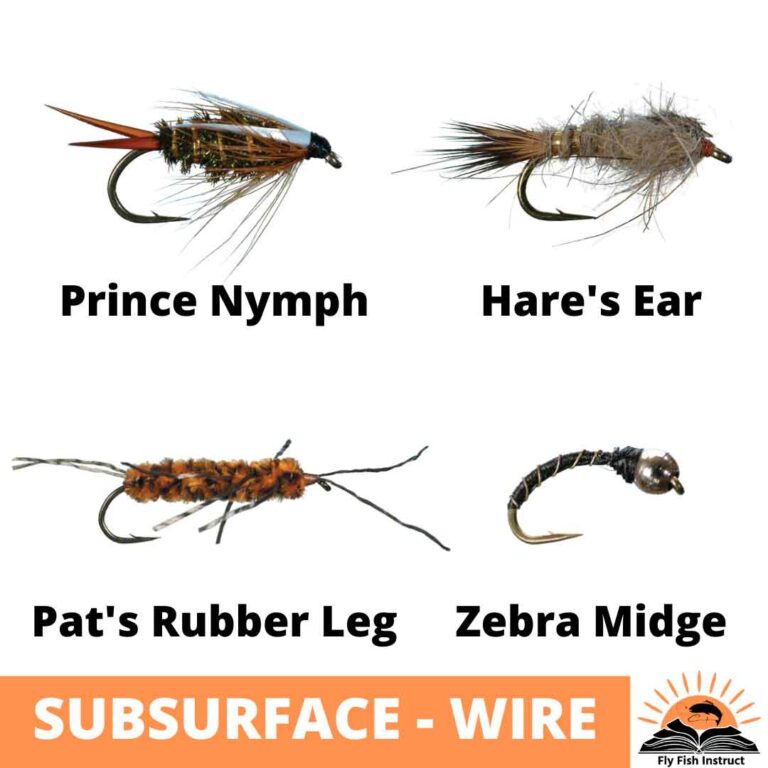
Webby Feathers
Subsurface flies often have a webby or softer hackled feather (cooked spaghetti) that has no resistance to pressure if standing on the barbule’s end. This helps the fly to sink and creates movement of the fly in the water column. They imitate the swimming legs or nitrogen bubble of an emerging insect. This is where the term “soft hackle” originates. These softer feathers can be seen on a Partridge and Olive or a bushier fly like a Wooly Bugger.
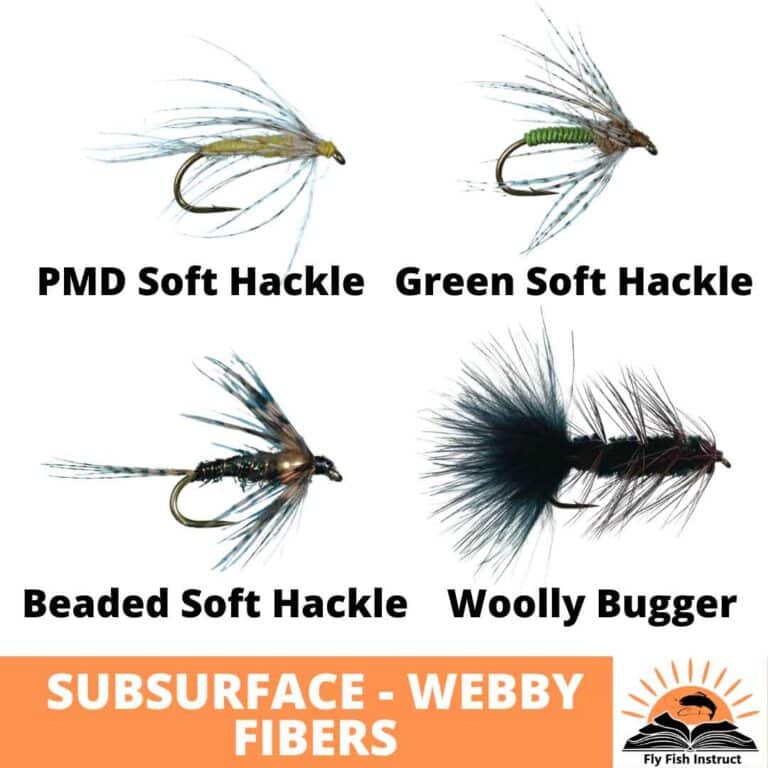
Summary
Look at the flies in your fly boxes and ask yourself- what ingredients (hair, feathers, foam, beads) do I see on this fly? What is it supposed to imitate? Again, it’s not necessary to know the names of every fly, but a general idea will always help you on the water and in the conversation! If unsure, use a search engine if you know the name, or start looking at images.
